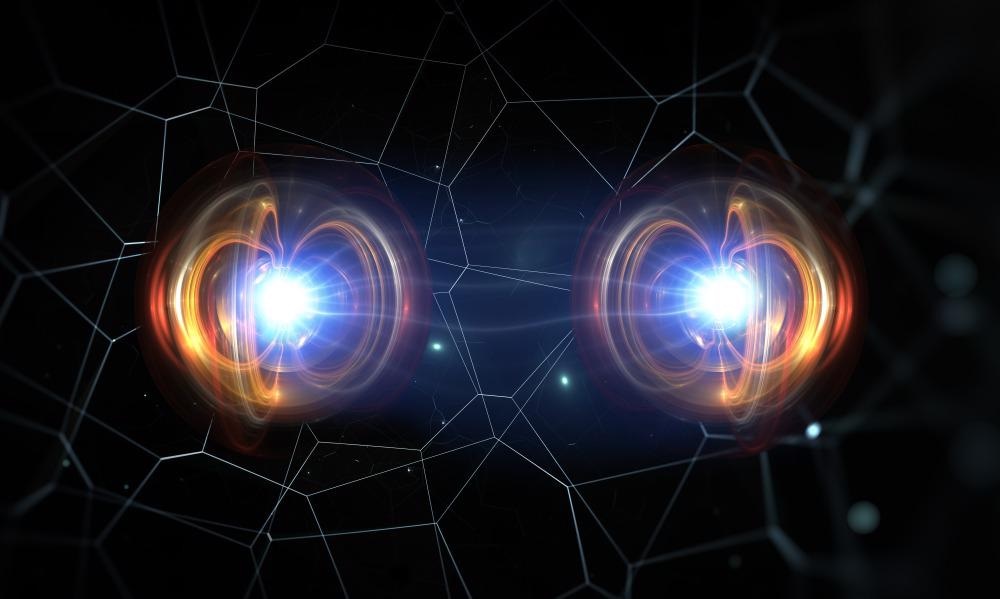May 12 2021
A new study by researchers from the University of Gothenburg has discovered that quantum mechanics can be employed to make steadier and more easily generated organic solar cells.

Image Credit: Jurik Peter/Shutterstock.com
Organic solar cells possess several benefits than conventional silicon-based solar cells. They could be produced inexpensively at a huge scale with the help of printing presses, and they are flexible, light, and malleable.
The issue with the existing organic solar cells is that they are not as effective and stable as silicon-based solar cells. As part of the new study, a team of researchers dealt with this challenge and discovered a method that can pave the way for more economical solar cell technology.
There are excellent opportunities for utilising quantum efficiencies to change different chemical and material characteristics. In this study, we present a method that makes it possible to increase diffusion of energy in organic materials. This allows us to create organic solar cells with simpler structure.
Karl Börjesson, Study Main Author and Professor of Physical Chemistry, University of Gothenburg
 Karl Börjesson. Image Credit: Privat.
Karl Börjesson. Image Credit: Privat.
Organic solar cells possess several benefits than conventional silicon-based solar cells. They could be produced inexpensively at a huge scale with the help of printing presses, and they are flexible, light, and malleable.
The issue with the existing organic solar cells is that they are not as effective and stable as silicon-based solar cells. As part of the new study, a team of researchers dealt with this challenge and discovered a method that can pave the way for more economical solar cell technology.
There are excellent opportunities for utilizing quantum efficiencies to change different chemical and material characteristics. In this study, we present a method that makes it possible to increase diffusion of energy in organic materials. This allows us to create organic solar cells with simpler structure.
Karl Börjesson, Study Main Author and Professor of Physical Chemistry, University of Gothenburg
Coupling Matter and Light
Fundamentally, this is about ensuring the energy present in the solar cells is efficiently transmitted to the correct spot. Organic solar cells consist of two materials, and the energy that is absorbed from the sun must be diffused to travel to the interface present between the materials. However, diffusion is a worthless process as the energy travels gradually and risks being lost as heat prior to it reaching this interface.
The solution has been to merge the two materials present in the solar cells to decrease the distance so that the energy reaches the interface faster. However, this also results in the solar cells not being in the state of thermodynamic equilibrium, leading to a design that is less durable after a while compared to what it could be.
The team demonstrates that the new technique enables the energy to be transmitted over a higher distance, which implies that the difficult blending of materials in solar cells could be avoided. The main aspect behind the technique is quantum effects, where light and material are integrated into hybrid light-matter states.
When we couple light and matter strongly, the energy is spread out over the entire system. If the system—as in this case—consists of multiple materials, the energy can be channelled to the interface. We show in the study that the energy travels faster to the interfaces when the materials are strongly coupled.
Karl Börjesson, Study Main Author and Professor of Physical Chemistry, University of Gothenburg
“This means that the materials in solar cells do not need to be physically blended since they are blended at the quantum level. This also leads to the system being in thermodynamic equilibrium,” added Börjesso.
Solar Cells with a Simple Layered Structure
Börjesson feels that the breakthrough can impact how organic solar cells are being manufactured, as it turns out to be possible to enhance their durability while the solar cells can be created with a simple layered structure. Moreover, he added that the study is really an offshoot of an idea already found in nature.
Nature uses strong coupling between molecules to effectively transfer solar energy in photosynthesis. In principle, we have shown that the same basic concept can be applied to organic solar cells.
Karl Börjesson, Study Main Author and Professor of Physical Chemistry, University of Gothenburg
Journal Reference:
Wang, M., et al. (2021) Polariton-assisted excitation energy channeling in organic heterojunctions. Nature Communications. doi.org/10.1038/s41467-021-22183-3.